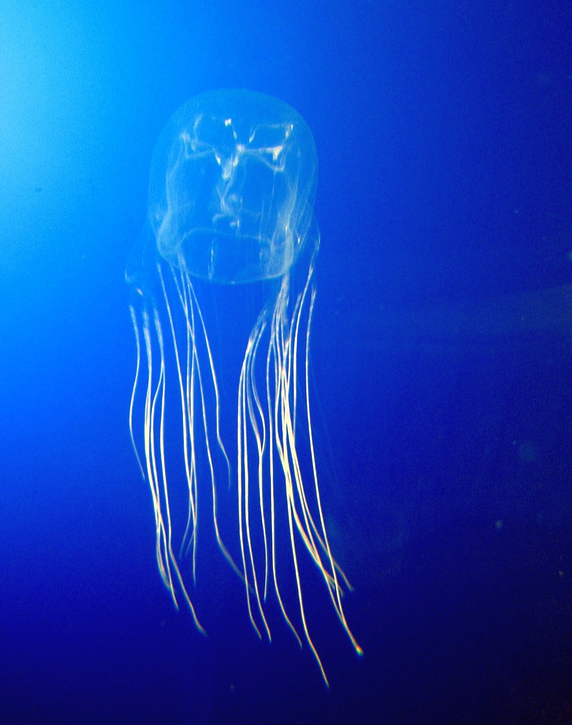
Pages
Friday, April 15, 2016
Invertebrates: Cnidaria
As one of the oldest existing animals, cnidarians are classified as Phylum Cnidaria. Jellyfishes, also known as scyphozoans, are a part of the four major classes of cnidarians and with that they are one of the most diverse living creatures to be known. Jellyfish have two body forms, the first body form is called polyps and at that stage their tentacles face upward while their second stage, medusas, form the tentacles facing downward. An interesting fact about jellyfish is that if they are in stress (in medusas) they can easily go in reverse back to polyps. Another interesting detail about these cnidarians is that they do not have a brain but they can detect changes in the environment from their nerve nets. Jellyfish come in many different shapes and size and even at the smallest size, their sting can still pack a punch. The Irukandji Jellyfish, Carukia barnesi, measure at 5 millimeters across and is one of the smallest box jellyfish in the world. They are known as the second most venomous jellyfish according to PlanetDeadly.com. These dangerous scyphozoans were first found in North Australia, but they were soon then spotted as far away as the British Isles. They are many interesting creatures in the sea, but jellyfish take the lead in one of the most beautiful but deadly sea animals. 

Subscribe to:
Post Comments (Atom)
No comments:
Post a Comment